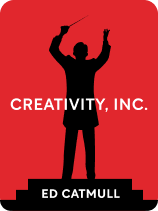

This article is an excerpt from the Shortform book guide to "Creativity, Inc." by Ed Catmull. Shortform has the world's best summaries and analyses of books you should be reading.
Like this article? Sign up for a free trial here .
What is Pixar University? How did the opportunities there fit into the overall Pixar mission?
Pixar University was a program to offer learning opportunities to employees. Classes varied and included many options unrelated to work.
Read more about Pixar University and its benefits.
Pixar University and the Importance of Learning
Learning opportunities keep your team members open to new experiences and allow them to bond with one another. These opportunities don’t have to have to be specific to your industry. In fact, it’s sometimes better if they aren’t. Tackling subjects they’ve never worked on before keeps team members in the mindset of a student, willing to learn and explore new ideas.
This also helps members of your organization bond in a way that they can’t during a typical work day. Being a student puts everyone on the same playing field, regardless of hierarchical level. Therefore, the intern may feel more comfortable speaking with an executive if they’re both working toward learning a new subject.
At Pixar, Catmull developed a program called Pixar University to create these opportunities. The classes range from ballet to computer programming. Catmull believes that this educational outlet helps his team members embrace what’s known in Japanese Zen as “the Beginner’s Mind.” “The Beginner’s Mind” removes the constraints of what you already know and allows you to focus on learning something new. When you’re a beginner, you have nothing to lose and are usually less afraid of failure. When this mindset is embraced by creative people, they’re better equipped to step into the unknown and explore new concepts.
Promote Research
Research is essential to creation. Learning more about the subject of your creative project will help you produce a more realistic product. For example, if you want to create a film about living with a dog, you would need to understand what it’s like to have a pet. If you’ve done no research into the topic or haven’t had any experiences with a pet, your film probably won’t be accurate.
Note: Research is best when it’s first-hand. While you can take inspiration from previous creative projects, if you rely solely on the creations of others, your work will likely come across as derivative and unoriginal. The line between inspiration and theft is thin, and you’ll benefit from creating your own work based on personal research. (Shortform note: Think about the way Playmobil: The Movie tried to capitalize on the success of The Lego Movie.)
At Pixar, this first-hand research experience is a high priority. For example, for Ratatouille (a film about a Parisian rat who wants to become a chef), Pixar sent a team to Paris to eat in Michelin-star restaurants, interview chefs, and visit kitchens. Less enjoyably, they also explored Paris’ sewer system to see where the rats resided. Using this research, the team could create a detailed world for their film. While most viewers may not notice many of these intricacies, the details work together to create a relatable environment.

———End of Preview———
Like what you just read? Read the rest of the world's best book summary and analysis of Ed Catmull's "Creativity, Inc." at Shortform .
Here's what you'll find in our full Creativity, Inc. summary :
- How Pixar went from selling computers to successful animation studio
- What it takes to build a creative workplace culture
- Why George Lucas sold Pixar to Steve Jobs






